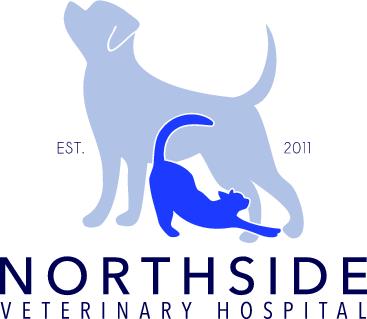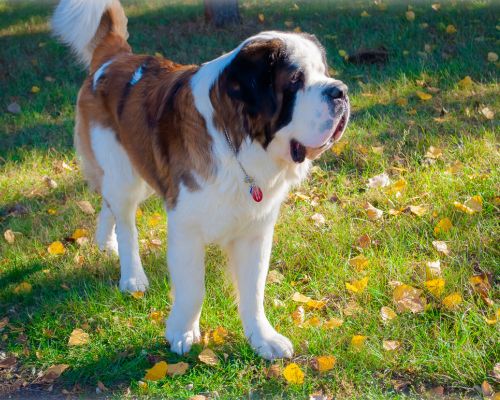Pet Gastric Dilatation Volvulus (GDV)
Gastric Dilatation-Volvulus (GDV), also known as bloat or gastric torsion, is a rapidly progressive life-threatening condition commonly affecting dogs.
Pet Gastric Dilatation Volvulus (GDV) in Shawnee, OK
It occurs when the stomach becomes engorged (dilation) with froth and air making it bloat, twist (volvulus), flip, and swell abnormally. It is associated with large meals that cause the stomach to dilate since food and gas might not be expelled.
Pet Gastric Dilatation Volvulus (GDV)
This results in a distended belly that causes numerous health complications:
- Breathing difficulty due to pressure from the diaphragm preventing the lungs from expanding adequately
- Preventing blood flow from returning to the heart from the stomach lining
- Restricting blood and oxygen to the heart and the rest of the body
- Stomach wall rupture
This condition is more likely to occur in large, deep-chested breeds such as:
- Dobermans
- German Shepherds
- Great Danes
- Saint Bernards
- Irish Setters
- Basset hounds
Other high-risk categories are Standard Poodles, Basset Hounds, and Weimaraners. Most pets go into shock when GDV happens.
Causes of GDV
The exact cause of GDV is unknown. Anxiety is a potential cause of GDV; according to recent studies, relaxed dogs were at a lower risk of developing the condition than fearful or hyperactive dogs. Some illnesses may decrease intestinal motion leading to GDV. Other causes and risk factors include:
- Increased thoracic height-to-width ratio (deep chest)
- Feeding one single large meal a day
- Ingesting bones
- Age (dogs above seven years)
- Eating or drinking excessively
- Vigorous exercises after eating
- Genetic predispositions
- Males are more likely to have GDV than females
- Eating moistened, dry food, especially food containing citric acid as a preservative
- Feeding from a height
GDV Signs and Symptoms
GDV symptoms occur swiftly and are often seen two to three hours after taking a lot of dry food and water or with strenuous exercises immediately after eating. Initial signs and symptoms include:
- Breathing difficulty
- Retching and vomiting signs without producing anything
- Panting
- Abdominal distention (bloated belly)
- Agitation and discomfort
- Abdominal pain
- Elevated heart and respiratory rates
- Weak pulse
- Shock
- Collapsing
- Drooling excessively
- Pale gums
Time is of the essence, and if you notice the above symptoms in your dog, it is of utmost importance that you contact your vet immediately. The longer you delay getting treatment, the higher the chances of a high heart rate and a weak pulse which may lead to death.
GDV Diagnosis
Diagnosis is based on the dog’s history, a thorough clinical examination, and X-rays. During a physical exam, the vet may note difficulty breathing, weak pulse, rapid heartbeat, and gas-filled enlarged stomach with abdominal palpation. Blood work may also be recommended, including serum chemistry, complete blood count, urinalysis, and blood electrolytes to determine metabolic disturbances. These tests help the vet to determine if there is a certain disease mimicking GDV and an ECG may be used to check the presence of cardiac arrhythmias. Your vet may also do a blood gas analysis to evaluate the severity of respiratory compromise. An X-ray of the abdomen helps confirm the presence of a dilated and twisted stomach.
GDV Treatment
Stabilizing your pet is the first and most crucial thing in treating this condition. It begins with intravenous fluids and oxygen, oxygen therapy, and stomach decompression, which includes inserting a tube down the esophagus into the stomach to release the air and fluid accumulation. Next, depending on your pet’s stability, surgery will be carried out to evaluate and treat abdominal organ damage and, if necessary, remove part of the stomach (partial gastrectomy) or spleen (splenectomy). The stomach will also be returned to the normal position and fixed permanently to the abdominal wall (gastropexy). This surgical procedure is done to prevent volvulus(rotation) and to ensure gastric dilatation does not happen again.
Aftercare and Outcome
Your pet will be hospitalized, given intravenous fluids, and evaluated to check for cardiac arrhythmias and other complications.
Postoperative care will include dietary management of multiple small meals of 2-3 meals per day instead of one large meal and exercise restriction for a few weeks to allow the incision to heal properly.
How to Prevent GDV in Your Pet
To prevent and avoid your pet from getting this life-threatening health condition, you need to carry out specific proactive measures, which include:
- Feeding your dog controlled several small meals a day instead of a single big meal.
- Ensuring your dog does not exercise or travel by car immediately after feeding.
- Discouraging your dog from eating too fast.
- Ensuring that your pet’s feeding bowl is not elevated.
- Avoid feeding your pet a diet of dry foods which lists oil ingredients among their first four labels.
- Know when your dog is anxious, stressed, or nervous, and ensure it is calm during meal times. Ensure there is no competition with other dogs when eating.
At Northside Veterinary Hospital, we offer effective treatments for GDV correction. For more information, contact us today or schedule an appointment.

